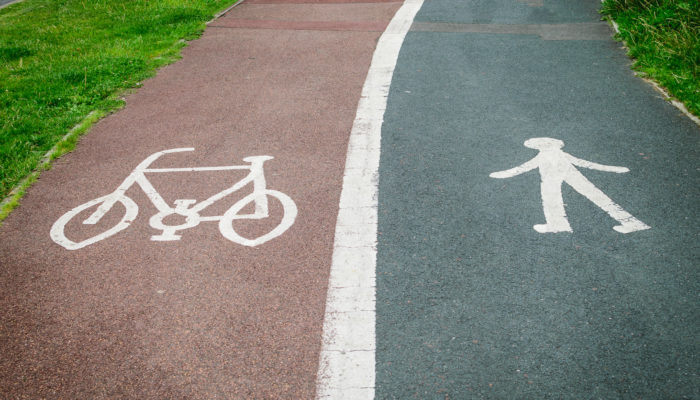
In ‘Decarbonising Transport: Setting the Challenge’, Government takes the welcome approach of viewing all modes of transport together. Ensuring that more trips can be made by foot is a crucial part of the solution – and the new cycling and walking plan for England ‘Gear Change’ is a step in the right direction too. But more needs to be done.
The National Travel Survey for England shows that almost 80% of journeys under a mile are walked, irrespective of where you live or if the household owns a car. This means if the places people want to get to as part of their daily activities are conveniently located, they will walk.
As distances increase more people jump into their cars. Just 31% of trips of 1-2 miles are walked and 59% are by car/van as driver or passenger. If we want to convert more of these everyday journeys to active travel this must go hand in hand with creating places which reduce people’s need to travel longer distances, and make local active travel safe and easy.
Why is this important? Transport is now the largest contributor to UK domestic greenhouse gas emissions, contributing 28% of UK domestic emissions in 20181. Walking is the ultimate zero carbon travel mode.
We should be focusing on how we use our finite road space in built up areas for active and sustainable modes of transport. Covid-19 has shown what can be done in a very short space of time to reallocate road space for walking and cycling. As restrictions ease it is essential that we still have a functioning public transport network, so it is vital these reallocations are retained and improved as they are finalised.
Travel is an important aspect of our everyday activities and our daily habits are often dependent on the transport available to us. However the trips we make depend on where we need or want to travel to, and our confidence in the convenience, safety and reliability of the networks that exist for both short and long journeys.
The emphasis must be on reducing car mileage and car dependency. In our towns and cities, this will entail ensuring that we can make our short journeys by foot. But walking is often overlooked – pointing to the need for specific guidance on the design of walking infrastructure, to sit alongside the recently published Local Transport Note (1/20) on cycle infrastructure design. The new regulator, Active Travel England, should measure new schemes against this guidance.
Putting in place behavioural change interventions to support more people to walk their everyday journeys to work, to stations, to shops and to schools, building on successful programmes such as the Access Fund, will also be essential.
A strong planning system is another important consideration. Planning (for land use and transport) can mean that shops and services, education, employment opportunities and public transport are all within easy reach – reducing the need to travel longer distances, making walking and cycling the convenient option to post a parcel, go for a haircut, travel to school or go to work.
Changes can start a neighbourhood at a time: slower speeds 20mph, using bollards and planters to create modal filters, parklets, school streets and width restrictions.
All these measures will help us to create low carbon, low traffic neighbourhoods where children can play outside, people are able to cross the road easily, air pollution is reduced – and walking, cycling and public transport become the natural first choice for everyday journeys.
About the Author
This post was written by Jenni Wiggle. Jenni is the Interim CEO of Living Streets.
